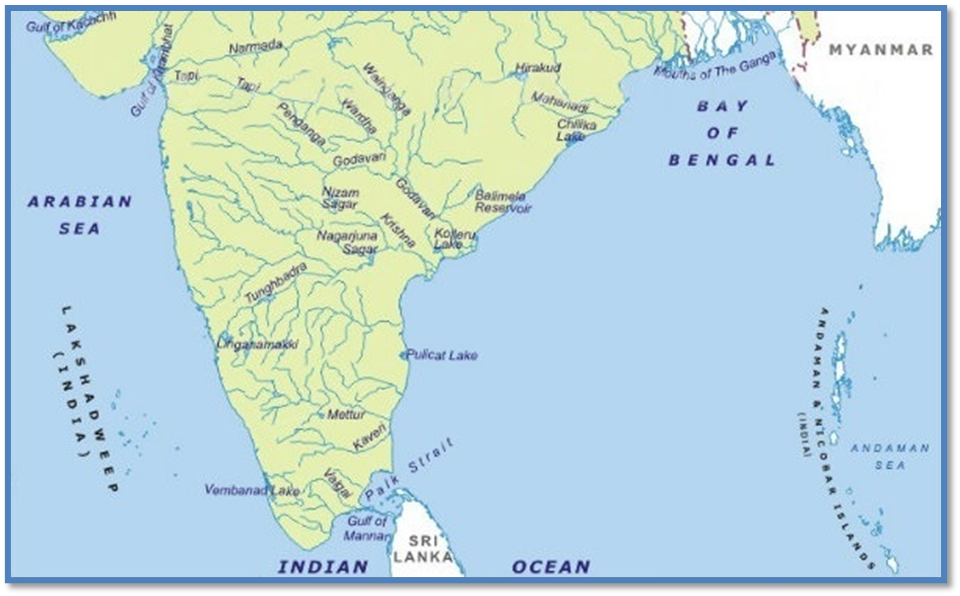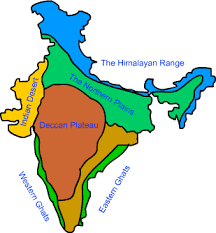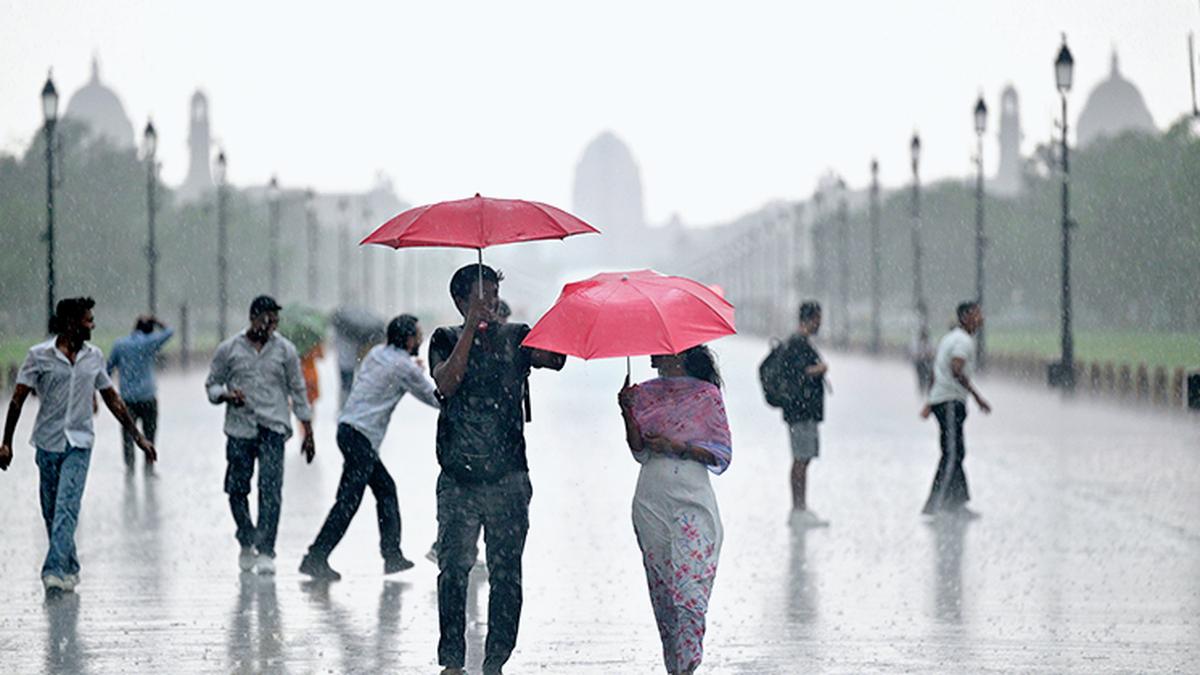Peninsular River - Evolution
- Three important geological occurrences in the distant past shaped Peninsular India's current drainage networks.
- During the early tertiary era, the western flank of the Peninsula began to sink, resulting in its submergence beneath the sea.
- In general, it has disrupted the river's symmetrical layout on both sides of the original watershed.
- The Himalayas were upheaved when the peninsular block's northern flank was subjected to subsidence and trough faulting.
- The Narmada and Tapi rivers run across faults, filling the original fractures with sediment.
- As a result, alluvial and deltaic deposits are scarce in these rivers.
- During the same era, a little tilt of the peninsular block from northwest to south-eastern imparted orientation to the whole drainage system towards the Bay of Bengal.
The Narmada River System
- The Narmada is a river located in central India.
- It rises to the summit of the Amarkantak Hill in Madhya Pradesh state.
- It outlines the traditional frontier between North India and South India.
- It is one of the major rivers of peninsular India. Only the Narmada, the Tapti, and the Mahi rivers run from east to west.
- The river flows through the states of Madhya Pradesh, Gujarat, and Maharashtra.
- It drains into the Arabian Sea in the Bharuch district of Gujarat.
The Tapi River System
- It is a central Indian river. It is one of the most important rivers of peninsular India with the run from east to west.
- It originates in the Eastern Satpura Range of southern Madhya Pradesh state.
- It flows in a westward direction, draining some important historic places like Madhya Pradesh’s Nimar region, East Vidarbha region and Maharashtra’s Khandesh in the northwest corner of the Deccan Plateau and South Gujarat before draining into the Gulf of Cambay of the Arabian Sea.
- The River Basin of Tapi River lies mostly in eastern and northern districts of Maharashtra state.
- The river also covers some districts of Madhya Pradesh and Gujarat as well.
- The principal tributaries of Tapi River are Waghur River, Aner River, Girna River, Purna River, Panzara River and Bori River.
The Godavari River System
- The Godavari River is the second-longest course in India with brownish water.
- The river is often referred to as the Dakshin (South) Ganga or Vriddhi (Old) Ganga.
- It is a seasonal river, dried during the summers, and widens during the monsoons.
- This river originates from Trimbakeshwar, near Nasik in Maharashtra.
- It flows southeast across south-central India through the states of Madhya Pradesh, Telangana, Andhra Pradesh, and Orissa, and drains into the Bay of Bengal.
- The river forms a fertile delta at Rajahmundry.
- The banks of this river have many pilgrimage sites, Nasik(MH), Bhadrachalam(TS), and Trimbak. Some of its tributaries include Pranahita (Combination of Penuganga and Warda), Indravati River, Bindusara, Sabari, and Manjira.
- Asia’s largest rail-cum-road bridge which links Kovvur and Rajahmundry is located on the river Godavari.
The Krishna River System
- Krishna is one of the longest rivers of India, which originates from Mahabaleshwar in Maharashtra.
- It flows through Sangli and drains the sea in the Bay of Bengal.
- The river flows through the states of Maharashtra, Karnataka, Telangana and Andhra Pradesh.
- Tungabhadra River is the main tributary which itself is formed by the Tunga and Bhadra rivers that originate in the Western Ghats.
- Dudhganga Rivers, Koyna, Bhima, Mallaprabha, Dindi, Ghataprabha, Warna, Yerla, and Music are some of the other tributaries.
The Cauvery River System
- The Cauvery is also known as Ganga of South India “Dakshin Bharat ki Ganga”.
- It originates from Talakaveri located in the Western Ghats.
- It is a famous pilgrimage and tourist place in the Kodagu district of Karnataka.
- The headwaters of the river are in the Western Ghats range of Karnataka state, and from Karnataka through Tamil Nadu.
- The river drains into the Bay of Bengal. The river supports irrigation for agriculture and is considered as a means of support of the ancient kingdoms and modern cities of South India.
- The river has many tributaries called Arkavathy, Shimsha, Hemavati, Kapila, Shimsha, Honnuhole, Amaravati, Lakshmana Kabini, Lokapavani, Bhavani, Noyyal, and Tirtha.
The Mahanadi River System
- The Mahanadi originates from the Satpura Range of central India and it is a river in eastern India.
- It flows east to the Bay of Bengal. The river drains the state of Maharashtra, Chhattisgarh, Jharkhand, and Orissa.
- The largest dam, the Hirakud Dam, is built on the river.




